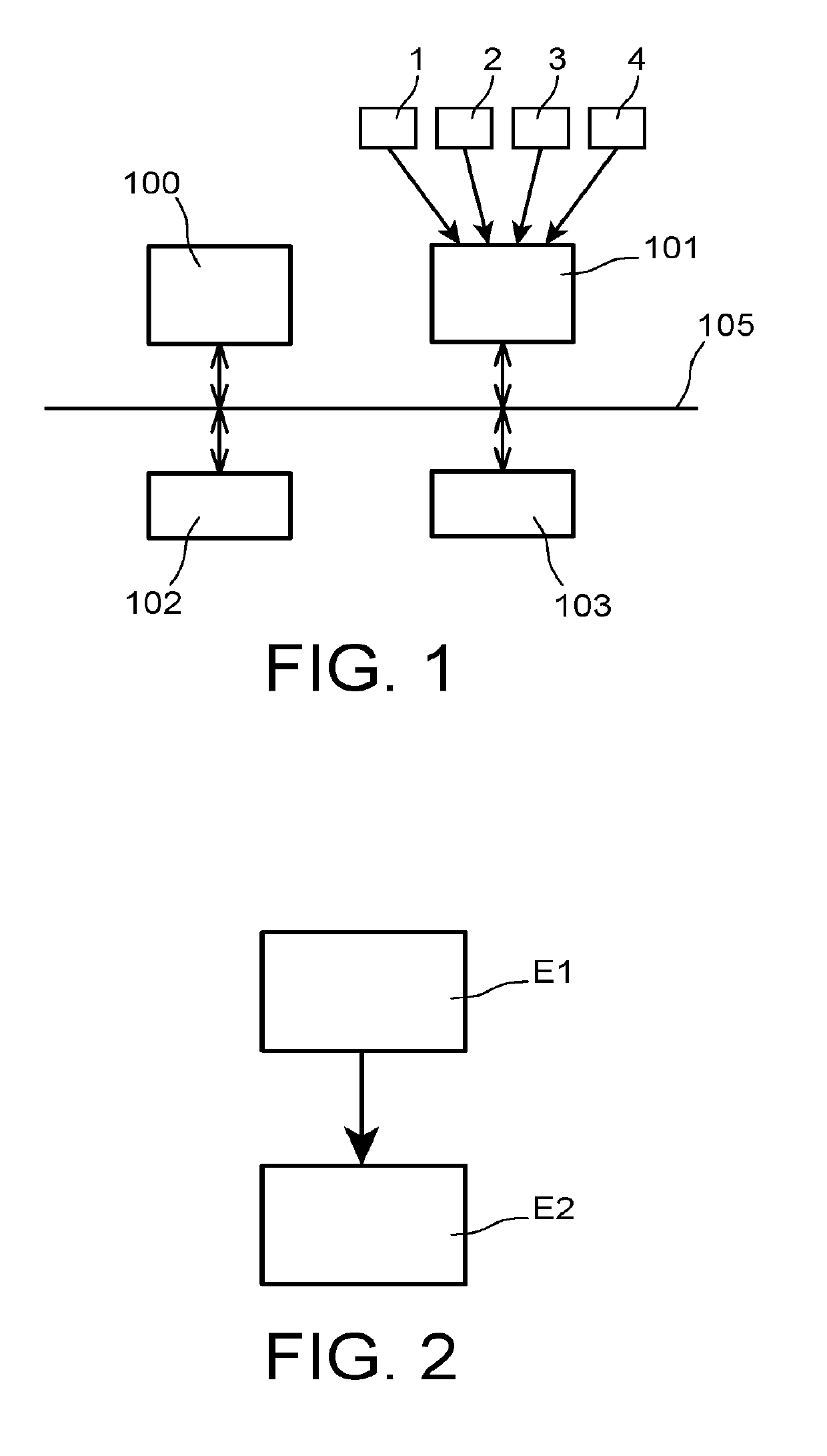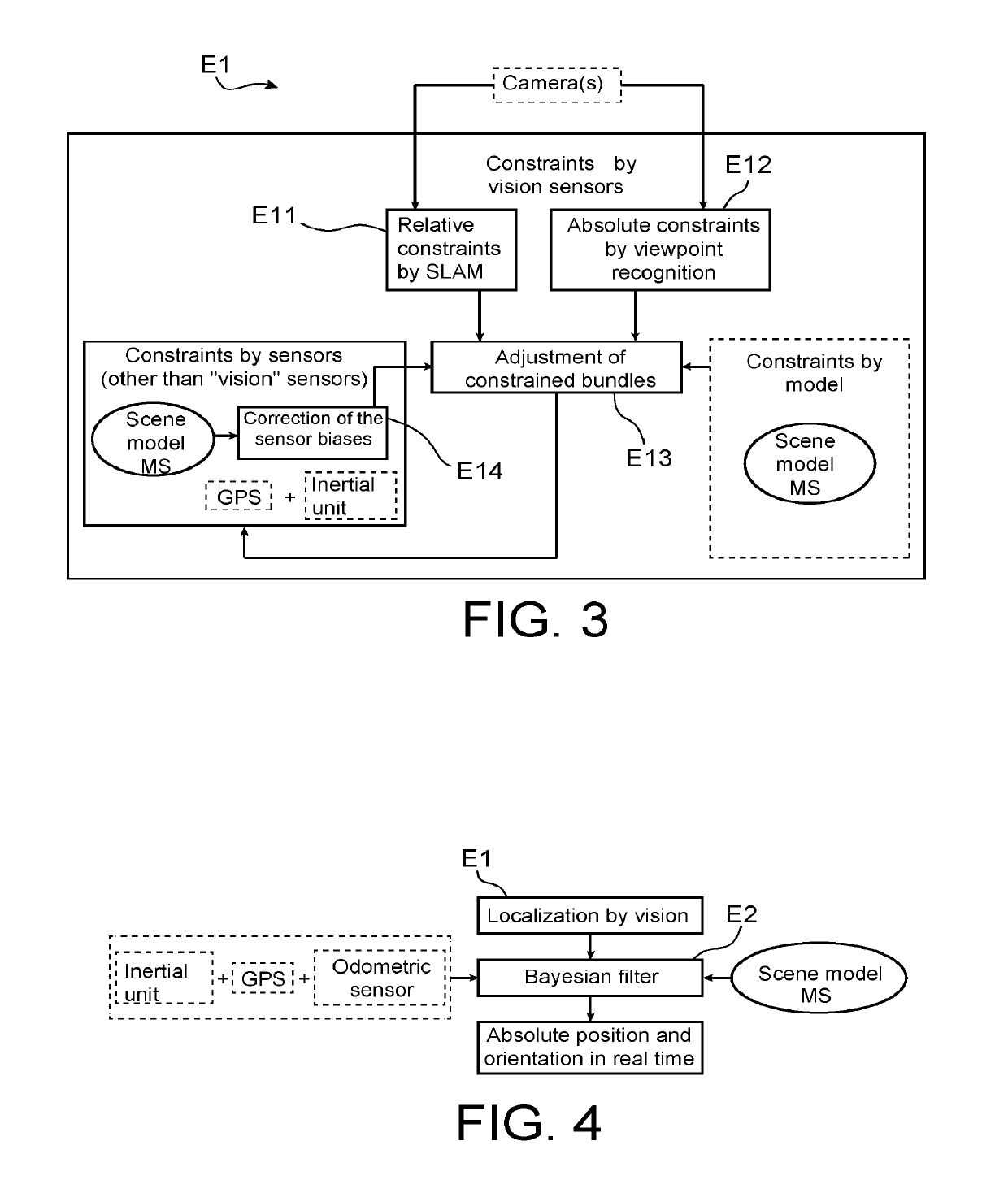Locating a vehicle
a real-time, vehicle technology, applied in the direction of image enhancement, process and machine control, etc., can solve the problems of accumulating over time uncertainties and errors, methods that do not offer enough accuracy to achieve the application of augmented reality or partial, and cannot compensate for positioning uncertainties, type of approach, and calculation of relative displacement between images
- Summary
- Abstract
- Description
- Claims
- Application Information
AI Technical Summary
Benefits of technology
Problems solved by technology
Method used
Image
Examples
Embodiment Construction
[0061]According to a preferred embodiment, represented in FIG. 1, a device for localizing a vehicle includes a set of sensors installed on the vehicle. These sensors are:[0062]at least one vision sensor 1 that provides image data of the vehicle environment,[0063]a satellite navigation module 2 called GNSS “Global Navigation Satellite System”,[0064]an odometric sensor 3, and[0065]an inertial unit 4.
[0066]In particular, the vision sensor 1 is a perspective monocular camera whose intrinsic parameters are known and fixed.
[0067]It should be noted that the satellite navigation module 2, the odometric sensor 3 and the inertial unit 4 constitute optional equipment. The vehicle localization device can therefore include only two of them, or only one of them. The satellite navigation module 2 is for example a GPS (Global Positioning System) module.
[0068]These sensors are connected to a data processing module that has the general structure of a computer. It includes in particular a processor 10...
PUM
 Login to View More
Login to View More Abstract
Description
Claims
Application Information
 Login to View More
Login to View More - R&D
- Intellectual Property
- Life Sciences
- Materials
- Tech Scout
- Unparalleled Data Quality
- Higher Quality Content
- 60% Fewer Hallucinations
Browse by: Latest US Patents, China's latest patents, Technical Efficacy Thesaurus, Application Domain, Technology Topic, Popular Technical Reports.
© 2025 PatSnap. All rights reserved.Legal|Privacy policy|Modern Slavery Act Transparency Statement|Sitemap|About US| Contact US: help@patsnap.com


